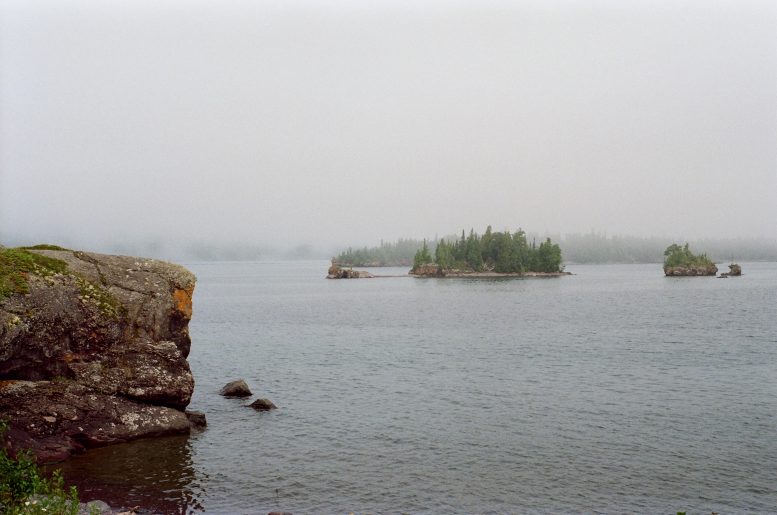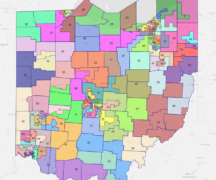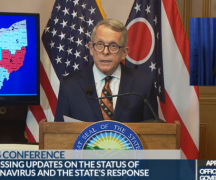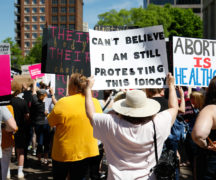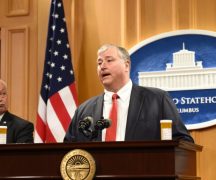Leaders of a U.S. Senate panel on Wednesday extolled national parks for providing a respite during the COVID-19 pandemic, but cautioned that enthusiasm for outdoors recreation will create its own problems in this summer’s tourism wave.
Sen. Angus King, a Maine independent and the chairman of a subcommittee that oversees the U.S. National Park Service, said this summer would “be the biggest season in the history of the Park Service,” and ranking Republican Steve Daines of Montana agreed with that prediction.
To help with overcrowding, the National Park Service plans to launch a public education campaign Thursday to encourage visitors to make plans and reservations in advance, acting director Shawn Benge told senators.
Benge also said the government was considering options including timed entry and limiting numbers. The Park Service would also offer real-time digital communications to let visitors know when parking lots are full, for example.
King, Daines and other senators cast the increased interest in parks as a positive development, but said it also posed challenges related to congestion and already-strained parks infrastructure.
While 2020 attendance to the National Park System decreased by about 28%, some parks broke monthly attendance records as Americans sought outdoor recreation opportunities in the U.S. during the pandemic, since both international travel and indoor gatherings were limited.
Members of the subcommittee praised the parks’ abilities to provide spaces to improve mental and physical health during a difficult period.
“I truly believe our national parks were a refuge for many Americans during the pandemic,” Daines said. “It was good for the soul when Americans visited their national parks.”
But with many international destinations still difficult to reach, and some COVID-19 restrictions still in place, senators said they expect swarms of visitors to national parks.
“One of the problems we’re encountering is a kind of inherent tension of loving places to death,” King said. “In our committee room, we have pictures of beautiful parks, but we also have pictures of huge traffic jams in places like Acadia and Yosemite.”
King said several times he hoped to hold another hearing specifically on congestion in national parks, adding that it was a difficult balance to allow maximum access to the parks but not diminish the experience. Congress and the Park Service may try and disperse visitors to less-visited parks and parts of parks, King said.
Long lines
Documentary filmmaker Ken Burns, who produced a 2009 PBS series celebrating national parks, testified at the hearing that he viewed the long lines to get in park entrances as a good problem, comparing it to the long lines to vote in his small New Hampshire town. Burns’ film company is based in Walpole.
Visits to national parks may still look different this year, as some mask mandates and other policies like limits on shuttle buses are still in place.
Under President Joe Biden’s executive orders, the Interior Department and other executive branch agencies set mask policy for national parks based on Centers for Disease Control and Prevention guidance, Benge said. The circumstances of the pandemic are likely to change in coming months and rule changes would likely follow, he said.
For now, unvaccinated employees, contractors and volunteers must wear masks inside parks buildings and outside when distancing is not possible, according to the National Park Service website. Visitors “should” take similar action, the website says.
U.S. Sen. Mazie Hirono, (D-Hawaii), asked Benge about implementing a formal reservation system, like the one her state’s Haleakalā National Park uses for sunrise visits, as a way to regulate crowds.
But Sen. Mike Lee, (R-Utah), registered his “strong opposition” to any such plans, saying they could reduce access.
Benge said the government was considering options including timed entry and limiting numbers. The Park Service would also offer real-time digital communications to let visitors know when parking lots are full, for example.
Even before the expected boom this year, parks faced a challenge in maintaining roads, bridges, buildings and other infrastructure. A September 2018 National Park Service study estimated the agency’s 419 units faced $11.9 billion in overdue maintenance needs.
Daines said the short supply of housing for parks employees was also an issue. Yellowstone National Park recently upgraded its employee housing, but many other parks need more, he said.
Last year’s passage of the Great American Outdoors Act, a law to provide mandatory funding for parks, was intended to eat into that backlog, but the law’s effects haven’t fully been realized yet. King asked Benge to have the Interior Department provide a report on the law’s implementation and the department’s plans to use it.
Hirono asked Benge if the Park Service needed more funding to address climate change, especially in coastal parks, adding that Congress could help.
Benge answered that the administration prioritized climate change, but did not know specifically what resources it needed.
‘Magnificent waterfalls,’ sweeping views
In his opening statement, Burns urged senators to continue working to preserve parkland, speaking in the soaring language viewers of his works would recognize.
“At the heart of the National Park idea is the notion that every American – whether their ancestors came over on the Mayflower or were here to begin with, or whether they just arrived, whether they’re from a big city or a farm, whether their father runs a factor or their mother is a maid—every American is part-owner of some of the best seafront property in the nation,” Burns said.
“They own magnificent waterfalls and stunning views of majestic mountains and gorgeous canyons. They have a stake in making sure that… these places are preserved for their children and their children’s children, forever.”

